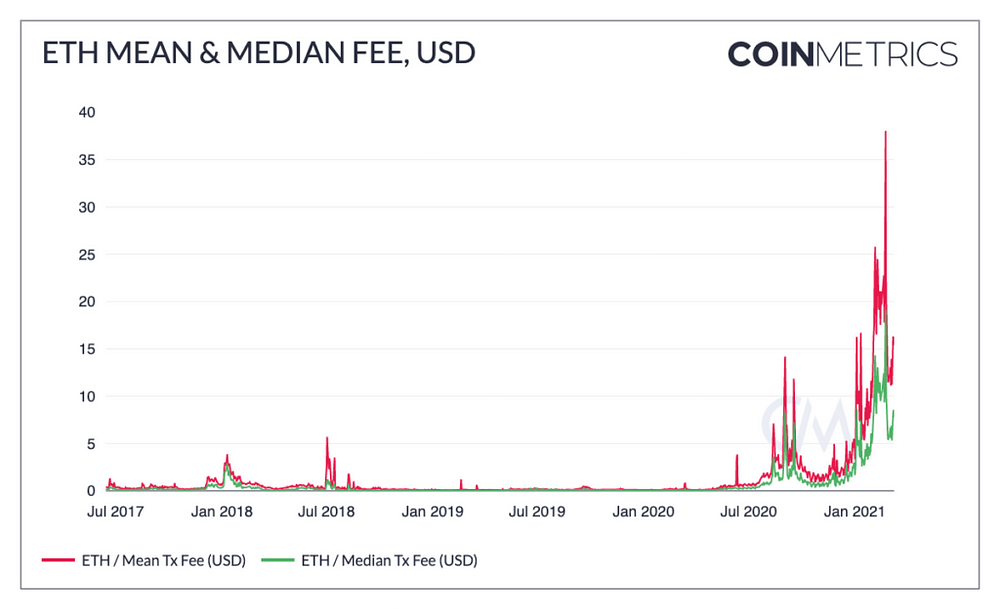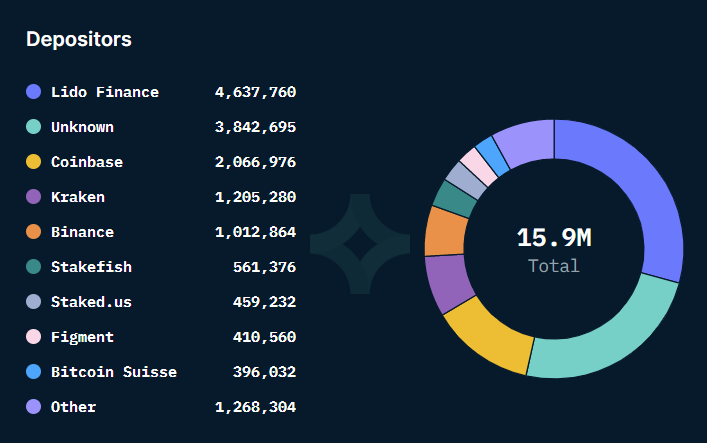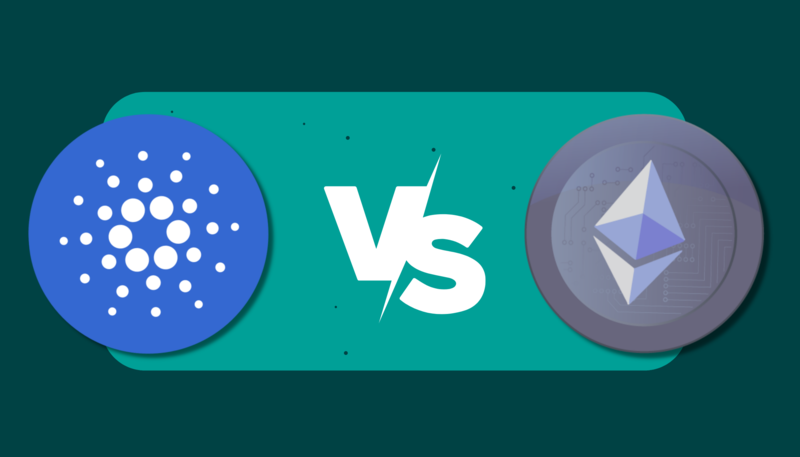As the world becomes increasingly digitised, blockchain technology has emerged as a game-changer, enabling decentralised transactions that are fast, secure, and transparent.
Ethereum has long been the dominant player in this space, but with its scalability issues and high transaction fees, many are now looking towards Cardano as a potential challenger.
Founded by one of the co-founders of Ethereum, Cardano has been developed through a scientific and peer-reviewed approach, offering a more secure and scalable ecosystem for decentralised applications.
In this article, we’ll delve into the critical features of Cardano and explore why it has the potential to become the next Ethereum.
Crypto Technology Made Simple
Here’s a breakdown of the three generations of cryptocurrency technology, each representing significant improvements over the previous one, just like the evolution of Pokémon:
First Generation (Bitcoin, Litecoin, Dogecoin): The earliest cryptocurrencies that paved the way for the blockchain and many of the essential features present in all cryptocurrencies today. However, some experts believe that it is the slowest, most expensive, and most outdated technology.
Second Generation (Ethereum): Ethereum introduced the concept of programmable smart contracts, revolutionising the world of decentralised agreements between parties. This innovation has made Ethereum a hub for businesses to establish their online presence.
Third Generation (Cardano, Polkadot): The next evolutionary stage of cryptocurrency technology, based on a proof-of-stake blockchain rather than the proof-of-work model used by previous generations. While Ethereum made significant improvements to gen one tech, its validation process for transactions is costly and energy-intensive, which is where Cardano and Polkadot come in. We will delve into the intricacies of POS and POW shortly.
The Fees
In recent years, Ethereum has emerged as the most popular blockchain platform, enabling users to transact with Ether (ETH) and deploy decentralised applications (DApps) on its blockchain. However, despite its many benefits, Ethereum has been grappling with one significant problem: high gas fees.
Essentially, gas fees are transaction fees that users must pay in order to complete a transaction on the Ethereum network. These fees are calculated based on the computational resources required to execute a particular transaction, and they are paid in ETH. As Ethereum has grown in popularity, the demand for transaction processing has surged, driving up the gas fees. The fees can sometimes be as low as a few cents to over a few $100.

This situation has become a major obstacle for Ethereum users, particularly those who want to perform smaller transactions or use DApps with low transaction volumes. In some cases, the fees can be higher than the value of the transaction itself, making it impractical to use Ethereum for certain purposes.
In contrast, Cardano, a third-generation blockchain platform founded by one of Ethereum’s co-founders, Charles Hoskinson, has emerged as a promising alternative to Ethereum. One of the key advantages of Cardano is its significantly lower fee structure, making it a more affordable option for users. While Cardano does charge a fee, it is much cheaper than Ethereum, and users can transact with smaller amounts of ADA, the platform’s native token, without worrying about high fees.
This is a critical advantage for Cardano as it seeks to gain a foothold in the blockchain market. In fact, some industry experts believe that high gas fees could be a significant factor in the adoption of blockchain technology, as users are likely to seek out platforms that offer more affordable transaction processing.
While Ethereum has announced plans to address the gas fee issue through Ethereum 2.0, which is shifting the platform’s consensus mechanism from proof-of-work to proof-of-stake, Cardano has already implemented this revolutionary blockchain innovation. Proof-of-stake is a consensus mechanism that allows users to stake their tokens and participate in the validation of transactions without requiring the energy-intensive mining process used by proof-of-work systems. This approach is much more energy-efficient and cost-effective, making it a better option for users.
While Ethereum remains the dominant player in the blockchain market, high gas fees have become a major problem for users, creating an opportunity for alternative platforms like Cardano to gain market share.
On a plus note for Ethereum, there are hundreds of people working on layer two scaling solutions such as Polygon that use many different methods, such as ZkRollups.
Layer 2 solutions on Ethereum are intended to help alleviate the platform’s scalability issues and high transaction fees by offloading some of the processing load from the main blockchain. However, these solutions have not been without their challenges.
One of the main issues with layer two solutions on Ethereum is their complexity. These solutions typically require significant development work and coordination with the main Ethereum network. This can make it challenging for developers to build and deploy DApps that are compatible with layer 2 solutions and for users to understand how to use these solutions effectively.
Another challenge is the fragmentation of the Ethereum ecosystem. There are currently multiple competing layer 2 solutions being developed, each with its own unique approach and set of tradeoffs. This can create confusion for users and developers, as they must decide which solution to use and how to integrate it into their workflows.
Additionally, there is a risk of security vulnerabilities with layer 2 solutions. Since these solutions operate outside the main Ethereum network, they may not have the same level of security guarantees as the main chain. This can make them vulnerable to attacks and hacks, putting user funds at risk.
With all that said, layer 2’s, to summarise, should be used as an enhancer, as is the case with Cardano with Hydra and Sidechains, and not as a Band-Aid like with Ethereum.
If your blockchain needs Layer2’s to function, there is something very wrong with the Layer1’s Design.

Carnivorous VC’s
One of the criticisms often levelled against Cardano is that it lacks significant VC funding, which some perceive as a negative for the network. However, there is a strong argument to be made that this is actually a positive feature for the network.
The venture capital (VC) world, particularly in the crypto industry, is known for its predatory practices and short-term focus on profitability. VCs often invest in projects with the sole goal of maximising profits in the shortest possible timeframe. This can lead to a range of negative consequences, including a lack of long-term vision, short-sighted decision-making, and a focus on hype over substance.
Furthermore, VCs are known for their tendency to dump their holdings on retail investors as soon as possible, leading to significant price drops and leaving the project and its supporters in a precarious position. We have seen this time and time again with Ethereum projects and DApps.
In contrast, Cardano’s lack of significant VC funding means that it is not beholden to the whims of profit-driven investors. This allows the project to maintain a long-term vision and focus on building a sustainable ecosystem that benefits all participants rather than simply catering to the interests of short-term investors.
Moreover, by avoiding VC funding, Cardano is able to maintain a high degree of decentralisation and community involvement. Unlike projects that are heavily reliant on VC funding, which often results in a centralised ownership structure, Cardano’s decentralised approach means that ownership of the network is distributed among a diverse range of stakeholders. This helps to ensure that the network remains resilient, independent, and truly decentralised.
While Cardano’s lack of significant VC funding may be viewed as a disadvantage by some, it is actually a strength that allows the network to maintain its long-term focus and commitment to decentralisation. By avoiding the short-term thinking and predatory practices of VCs, Cardano is well-positioned to build a sustainable and community-driven ecosystem that benefits all participants.
The Staking Ratio
The staking ratio is a key metric used to measure the level of participation and engagement within a POS blockchain network. It refers to the percentage of tokens in circulation that users on the network actively stake.
A high staking ratio is significant for several reasons. First and foremost, it indicates a high level of engagement and participation from users, which is critical for the success of a blockchain network. This is because staking is an important function in many blockchain ecosystems, as it enables users to help secure the network, earn rewards, and participate in network governance.
Furthermore, a high staking ratio can help to promote decentralisation within a blockchain network. When a large percentage of tokens are staked, it becomes more difficult for any single entity or group to gain control over the network. This helps to ensure that the network remains truly decentralised and resilient.

In the case of Cardano, the staking ratio of 71% is a significant milestone, as it indicates that a large percentage of the ADA tokens in circulation are actively staked by users on the network. This demonstrates a high level of engagement and participation from the Cardano community, which is critical for the success of the network.
In contrast, Ethereum’s staking ratio of 13% is relatively low, indicating a lower level of engagement and participation from users.
Funds Locked up forever?
Cardano’s staking model is designed to be as inclusive as possible, allowing users to stake any amount of ADA, regardless of how much they hold. This means that even users with small amounts of ADA can participate in the network’s consensus mechanism and earn rewards for helping to secure the network.
In contrast, Ethereum’s staking model requires users to hold a minimum of 32 ETH in order to participate in the network’s validation process. This means that only users with significant amounts of ETH are able to participate, excluding smaller investors and potentially creating a more centralised ownership structure.
Furthermore, Ethereum users who do not meet the minimum staking threshold must rely on centralised or permissioned staking providers like Lido, Coinbase, or Kraken to earn rewards. This puts users at risk of losing control of their assets and may compromise the security and decentralisation of the network.
Another key difference between Cardano and Ethereum’s staking models is the ability to unstake assets. In Cardano, users can unstake their ADA at any time, giving them greater flexibility and control over their assets. In contrast, once users stake their ETH on Ethereum, their assets are locked up until the completion of the upcoming Shanghai update. However, there is currently no set timeline for this update, meaning that users may have to wait an indeterminate amount of time before they are able to access their staked ETH again.
This lack of clarity and control over staked assets on Ethereum may be a cause for concern for some users, particularly those who value flexibility and transparency. In contrast, Cardano’s more inclusive and flexible staking model may be seen as a key advantage, particularly for users who want to participate in the network without having to make significant investments.
Vectors of attack
One of the key advantages of blockchain technology is its potential to promote decentralization, by enabling a distributed network of nodes to validate transactions and secure the network. However, as with any technology, there are potential vulnerabilities that could be exploited by bad actors.

One of these vulnerabilities is a small number of entities’ concentration of control over network resources. In the case of Ethereum, for example, it is concerning that 59.6% of staked ETH is controlled by just five entities. This concentration of power creates a significant attack vector for malicious actors who could potentially target these entities and compromise the security and decentralisation of the network.
In contrast, Cardano’s staking model has been designed to promote decentralisation and minimise the risk of concentration of control. Most Cardano wallets are staking on L1, the first layer of the Cardano blockchain, which enables users to participate in network validation and governance directly rather than relying on third-party applications.
This approach is in line with Cardano’s broader philosophy of promoting decentralisation and sustainability. By minimising the concentration of control over network resources, Cardano is able to create a more resilient and secure network that is less vulnerable to attack.

The Developers
The success of any blockchain platform depends heavily on the strength and support of its community. This is particularly true in the case of Cardano, which has been backed by a passionate and committed community of developers and users from its early days.
One of the key metrics used to measure the level of community engagement and support for a blockchain project is the number of Github commits. GitHub is a widely used platform that enables developers to collaborate on code and track changes to software projects over time.
As of March 2023, Cardano has an average of 304 Github commits per day, indicating a high level of community engagement and activity. This level of activity demonstrates Cardano’s community’s strong commitment to driving the platform’s long-term success and adoption and to building a robust and sustainable ecosystem that benefits all participants.
In contrast, Ethereum has an average of 125 Github commits per day, which is significantly lower than Cardano’s figure. This may be due in part to the fact that Ethereum is a more mature platform, with a larger number of users and a more established developer community. However, it also suggests that Cardano’s community is particularly active and committed and that there is a high level of interest and enthusiasm for the platform.
As blockchain technology continues to revolutionise the world, Cardano has emerged as a promising alternative to Ethereum. Cardano offers a more secure, scalable and affordable ecosystem for decentralised applications. With its lower transaction fees and the implementation of proof-of-stake, Cardano has positioned itself as a viable challenger to Ethereum’s dominance.
Furthermore, Cardano’s lack of significant VC funding and more inclusive staking model provides a decentralised and community-driven ecosystem, which benefits all participants.
Finally, Cardano’s community’s strong commitment to driving the platform’s long-term success and adoption shows that it is more than just a challenger but a platform with a dedicated following. As the blockchain landscape continues to evolve, Cardano’s approach and community-driven philosophy are likely to propel it to even greater heights.










